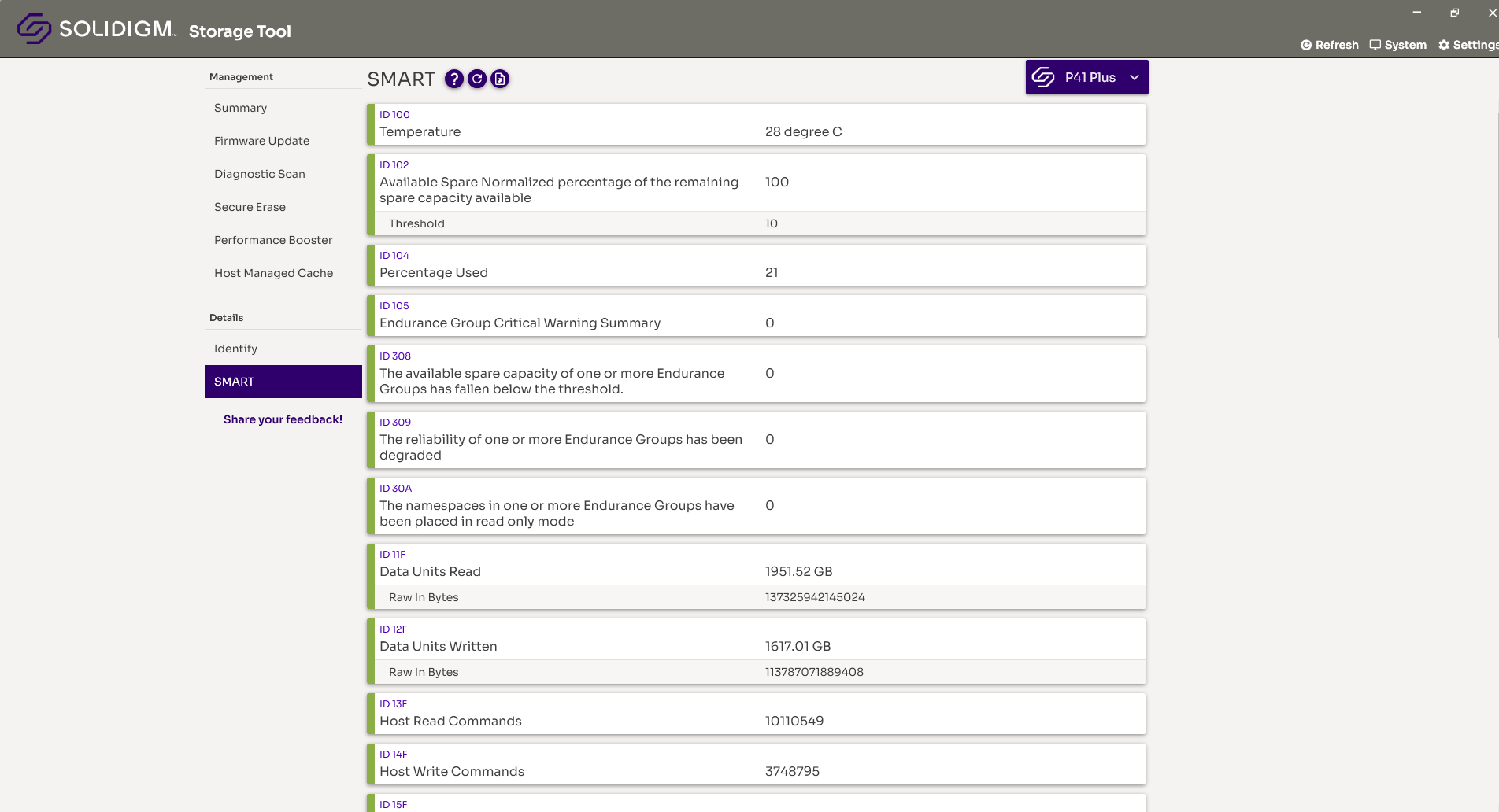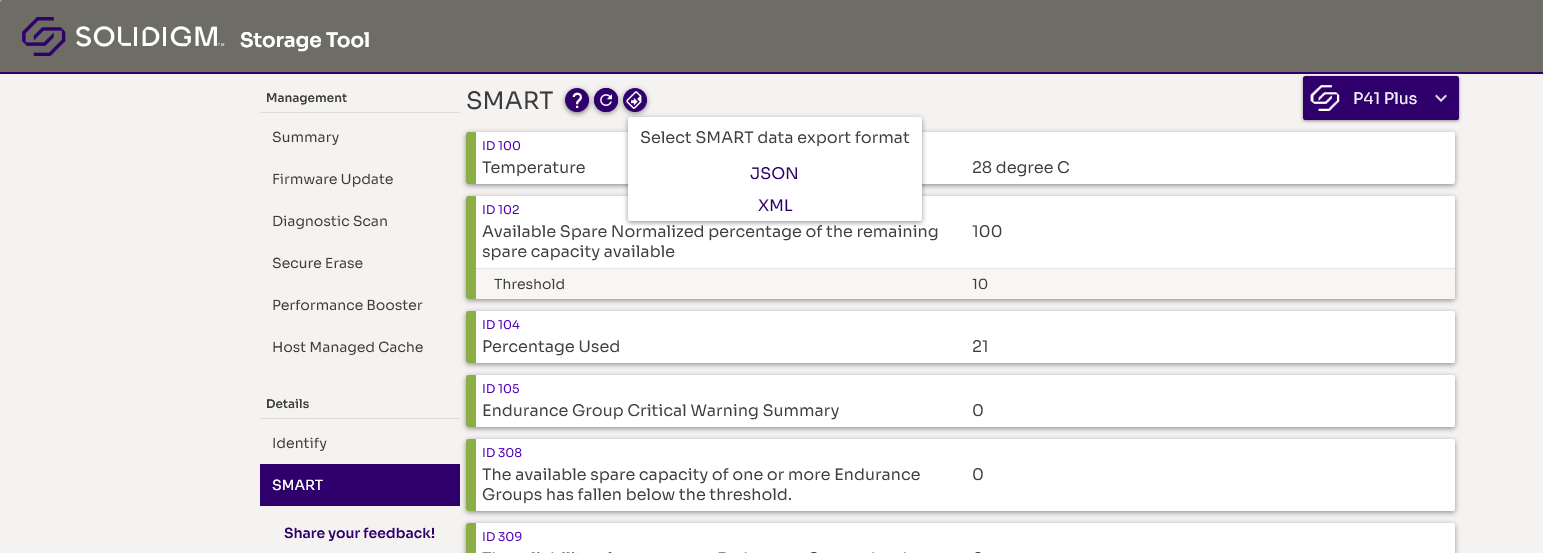有关如何使用重要 SMART 或类似属性的子集确定 Solidigm SSD 的运行状况的信息
| SMART 属性可能特定于产品和供应商。SATA 和 NVMe* 属性具有不同的 SMART ID,并在产品规格中进行了全面描述。 |
有关 SMART 技术的一般信息,请访问 https://en.wikipedia.org/wiki/S.M.A.R.T。
SMART 读数可以 包含以下任何值,视图通常取决于用于提取 SMART 数据的工具。- SMART ID(十六进制或十进制值)
- 归一化 值
- 原始 值
- 阈 值
- 地位
请注意,在某些情况下,属性的 Raw 值很重要,而在其他属性情况下,属性的 Normalized 值很重要。另请注意,只有失败前的属性才具有 阈值 ,并且属性值可以在任一方向上从好到坏:数量/值的增加或减少。在下面的示例中,优质 SSD 的 可用备用规范化 属性值介于 11 和 100 之间(10 及以下为坏)。
下表显示了 SATA SSD 上最重要的属性,并提供了相应的示例查看值、阈值以及可接受条件和最佳情况条件。如果属性在可接受的条件下,则 SSD 处于良好状态。如果它们超出了可接受的条件,请联系 Solidigm™ 客户支持
.
SATA型
| 重要 属性 | 属性名称 | 看价值 | 门槛 | 可接受的条件 |
| B8小时 | 端到端错误检测计数 | 规范化 | 90 | 91-100 (100=最佳) |
| E8h / AA (重复 属性) | 可用 预留空间 | 规范化 | 10 | 11-100 (100=最佳) |
| E9H | 介质磨损 指示器 | 规范化 | 1 | 2-100 (100=最佳) |
| AFh(英语:AFh) | 断电保护 故障 | 规范化 | 失败=低于 10 | 显示巨大的 数字 |
| 05小时 | 重新分配的扇区 计数 | 生 | 1000 | 0-999 (0=最佳) |
NVMe*
下面的示例显示了一个很好的 SSD (NVMe*) SMART 属性摘要。每个重要属性的查看值是 RAW 值。 
这些属性可以在上面的示例中进行分析。严重警告指标实际上是最重要的指标,因为它捕获了所有其他重要指标。不安全关机对 SSD 用户来说应该是有意义的,或者操作系统驱动程序可能存在问题(不发送安全关机信号)。
温度指示器指示冷却是否足够。
“使用百分比”表示介质磨损,介于 1 和 99 之间的值是可以接受的,而 100 则不可接受。
介质错误越少表示 SSD 运行状况越好。如果此处提到的任何属性超过可接受的阈值限制,则会导致严重警告。
用户可以下载 Solidigm™ 存储工具 (SST) 来提取 SMART 属性并查看整体 SSD 运行状况摘要。

如果您看到任何严重警告,请联系 Solidigm™ 客户支持:
这些值可以导出到更易于共享的文件中 - 请参阅下面的按钮。

Solidigm 固态硬盘支持产品规格中列出的 SMART 属性,并且实施与 NVMe* Express 规格一致。
问题? 查看我们的社区 论坛 寻求帮助。
问题? 联系 Solidigm™ 客户支持:
[中文][简体中文][德语][日语][韩语]
成功